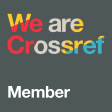Flipped classroom: a bridge towards new challenges in elementary education
DOI:
https://doi.org/10.51302/tce.2017.153Keywords:
flipped classroom, elementary education, teaching model, didactic strategiesAbstract
In the last years, the educational stage in Spain has been characterized by an evident transformation with regards to the methodology to apply in classrooms of the different educational stages.
The lack of motivation largely of the students invites to restructure an educational system anchored in the time. There is a need to adapt the contents and the methods of transmission, following the new reality that surrounds to the students of the present. In this sense, the information and communications technology (ICT), aims to be an instrument of transmission and engine of change towards new bridges of learning. In particular, the flipped classroom model consists of inverting the way of explaining the educational contents that transform the figure of the teacher and the student.
This work proposes a methodology to implement the flipped classroom model in the area of elementary education.
In this way, the education and the ICT are merged in transforming the classroom in an environment that incites to be creative, to enhance collaborative working practices, to establish discussion, and to encourage to think about.
Downloads
References
Adams Becker, S.; Cummins, M.; Davis, A.; Freeman, A.; Hall Giesinger, C. y Ananthanarayanan, V. [2017]: NMC Horizon Report: 2017 higher education edition, Austin (Texas): The New Media Consortium.
Ash, K. [2012]: «Educators evaluate "flipped classrooms". Benefits and drawbacks seen in replacing lectures with on-demand video», Education Week, 32 (2), págs. 6-8.
Bergmann, J.; Sams, A.; Daniels, K.; Bennett, B.; Marshall, H. W. y Arfstrom, K. H. [2014a]: «The four pillars of F-L-I-P», Flipped Learning Network (FLN). Disponible en: http://www.flippedlearning.org/cms/lib07/VA01923112/Centricity/Domain/46/FLIP_handout_FNL_Web.pdf o http://flippedlearning.org/wp-content/uploads/2016/07/PilaresFlip.pdf [Consultado: febrero de 2017].
Brent, G. [2013]: Student perceptions of the flipped classroom, doctoral dissertation, University of British Columbia. Disponible en: https://open.library.ubc.ca/cIRcle/collections/ubctheses/24/items/1.0073641 [Consultado: enero de 2017].
Cervera, D. (coord.) [2010]: «Teoría y práctica del proceso de enseñanza-aprendizaje», en R. Blanco, M.ª L. Casado, D. Cervera, F. J. Martín, F. J. Mediano, M.ª J. Ramos y C. Utiel, Didáctica de la tecnología, Barcelona: Graó, págs. 9-21.
García Barrera, A. [2013]: «El aula inversa: cambiando la respuesta a las necesidades de los estudiantes», Revista de la Asociación de Inspectores de Educación de España, 19, págs. 1-8. Disponible en: http://www.adide.org/revista/images/stories/revista19/ase19_mono02.pdf [Consultado: enero de 2017].
Johnson, L.; Adams Becker, S.; Estrada, V. y Freeman, A. [2015]: NMC Horizon Report: 2015 K-12 edition, Austin (Texas): The New Media Consortium.
Núñez, A. y Gutiérrez, I. [2016]: «Flipped learning para el aprendizaje del inglés en educación primaria», Revista Electrónica de Tecnología Educativa, 56. Disponible en: http://www.edutec.es/revista/index.php/edutec-e/arti-cle/view/654/Edutec_n56_Nu%C3%B1ez_Gutierrez [Consultado: marzo de 2017].
Ojando, E. S.; Simón, J.; Prats, M. À. y Àvila, X. [2016]: «Experiencia de flipped classroom en tres escuelas de educación primaria de Barcelona», Comunicación y Pedagogía: Nuevas Tecnologías y Recursos Didácticos, núms. 285-286. Disponible en: http://www.jordisimon.com/papers/comunicacionypedagogia2015.pdf [Consultado: marzo de 2017].
Palacios, J.; Marchesi, A. y Coll, C. [2001]: Desarrollo psicológico y educación, Madrid: Alianza Editorial.
Prensky, M. [2001]: «Digital natives, digital inmigrants», On the Horizon, 9 (5), págs. 1-6. Disponible en: http://www.marcprensky.com/writing/Prensky%20-%20Digital%20Natives,%20Digital%20Immigrants%20-%20Part1.pdf [Consultado: abril de 2017].
Sánchez, M.ª del M. [2013]: Flipped TIC: diseño de una experiencia flipped classroom en el aula, Departamento de Didáctica y Organización Escolar de la Universidad de Murcia, Grupo de Investigación en Tecnología Educativa. Disponible en: https://digitum.um.es/xmlui/bitstream/10201/35812/1/Memoria%20final%20Flipped%20TIC.pdf [Consultado: marzo de 2017].
Santiago, R. [2013]: The flipped classroom. Disponible en: http://www.theflippedclassroom.es/what-is-innovacion-educativa/ [Consultado: febrero de 2017].
Serrano, L.; Soler A. y Hernández, L. [2013]: El abandono educativo temprano: análisis del caso español, Valencia: Ivie.
Shu-Yuan, T.; Yun-Hsuan, H. y Mei-Jia, T. [2016]: «Applying the flipped classroom with game-based learning in elementary school students' english learning», Proceedings of the International Conference on Educational Innovation through Technology, págs. 59-63.
Strayer, J. F. [2007]: The effects of the classroom flip on the learning environment: a comparison of learning activity in a traditional classroom and a flip classroom that used and intelligent tutoring system, doctoral dis-sertation, The Ohio State University. Disponible en: http://faculty.washington.edu/rvanderp/DLData/FlippingClassDis.pdf [Consultado: abril de 2017].
Downloads
Published
How to Cite
Issue
Section
License
Copyright (c) 2017 Gonzalo Llanos García, Javier Bravo-Agapito

This work is licensed under a Creative Commons Attribution-NonCommercial-NoDerivatives 4.0 International License.


























